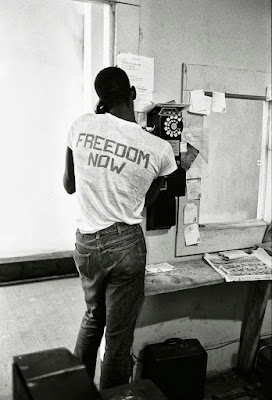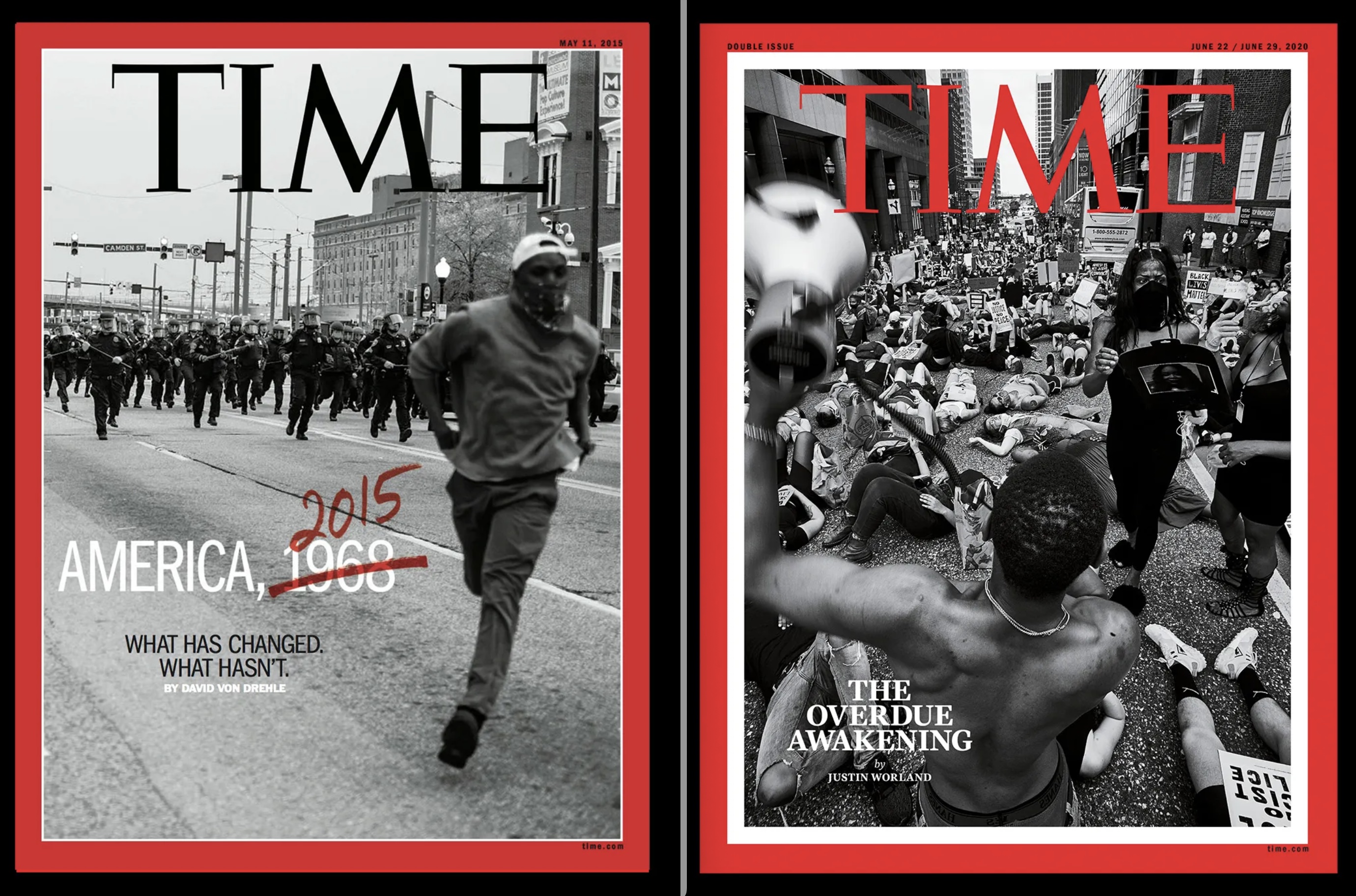Via The Albuquerque Journal
June 9, 2024
Explore ’64
Monroe Gallery exhibit turns the lens to the pivotal year in US history
By Kathaleen Roberts
Assistant Arts Editor
1964 was the year the ’60s really began.
That’s the year American culture fractured and eventually split along ideological lines, establishing the poles of societal debate that are still raging today. The Beatles led a British Invasion of popular music, Muhammad Ali, who called himself “The Greatest,” shocked the world and became the heavyweight champion, three civil rights workers were murdered in Mississippi, and activist Fannie Lou Hamer declared “I’m Sick and Tired of Being Sick and Tired.” 1964 was a year of remarkable transition that prefigured 60 years of tumultuous change.
Open at Santa Fe’s Monroe Gallery of Photography, “1964” covers a decade of unremitting change and protest that still resonates today.
Sixty years ago, the United States was still recovering from the assassination of John F. Kennedy. 1964 was the year that societal fault lines started to become visible. Politics, civil rights, women’s rights, sexuality, inequality, poverty, Vietnam and youth culture all became flashpoints in societal debate that prefigured 60 years of tumultuous change. Sen. Barry Goldwater’s (nicknamed Mr.
Conservative) campaign for president began a conservative revolution in the Republican Party that still impacts the GOP and American politics today.
“The American elements that we were struggling with then, we are struggling with today,” said Michelle Monroe, gallery co-owner.
“In spite of the times we find ourselves in, we are the same species.”
Parents were rightly shocked to see white, middle- class youths overdose on heroin. Switch the drug to the much more lethal fentanyl today.
In 1964, civil rights activists launched protests, marches and voting drives. Today, Black Lives Matter is attempting to address the same issues of justice, healing and freedom.
Fannie Lou Hamer, a Mississippi sharecropper’s child, was determined to address members of the Mississippi Democratic Convention.
Bill Eppridge: Fannie Lou Hamer, Mississippi Freedom Democratic State Convention in Jackson, Mississippi, August 6, 1964
Sterilized without her permission, she tried to register to vote and was beaten and hospitalized.
She formed the Mississippi Freedom Democratic Party to comply with convention rules.
President Lyndon “Johnson was so concerned that he announced he was going to give a speech that very day,” Monroe said.
Life magazine photographer Bill Eppridge flew to Meridian, Mississippi, to photograph the aftermath of the murders of activists James Chaney, Andrew Goodman and Michael Schwerner by members of the Ku Klux Klan in what became known as the Mississippi Burning murders. Eppridge ask Chaney’s mother what he could photograph and she told him to shoot everything, including her son’s funeral. His shot of Mrs. Chaney comforting her son Ben crystallizes their grief.
Bill Eppridge: Mrs. Chaney and young Ben, James Chaney funeral, Meridian, Mississippi, 1964
“While he was there, they found those three bodies buried behind a dam that was about to be poured over,” Monroe said.
Bob Gomel: Cassius Clay and Malcolm X, Miami, 1964
Bob Gomel photographed Muhammed Ali (then known as Cassius Clay) celebrating his defeat of Sonny Liston with Malcolm X looking over his shoulder.
“He announced the (name) change the next day,” Monroe said. “He writes that famous line, ‘I don’t have to be what you want me to be.’ Malcolm had pressed him with, ‘You’re a Muslim, but you’re not making a declaration about it and we need you.’” Steve Schapiro’s World’s Fair “Stall In” shows cars blocking a central street to the event by Congress of Racial Equality activists.
Steve Schapiro: CORE "Stall-In" during the World's Fair, New York, 1964
New York had spent millions to host the fair, while Black and Puerto Rican people lived in squalor.
“It did affect the attendance the first day,” Monroe said.
In February, when the nation was still in mourning, the Beatles arrived at Kennedy Airport.
Bill Eppridge: The Beatles wait arrive at Penn Station, NY, February 12, 1964
That was a huge generational catalyst for the rest of the decade,” Monroe said. “Suddenly, everybody had something in common. It began as fandom and moved into an anti-war generation, a generation that wanted to embrace equality, a generation that wanted to embrace women’s equality.
“Those goofballs arrived and created brotherhood, sisterhood. Sports and music have done so much to bring people together.”
“That is such a flashpoint in the fabric of our country,” Monroe said.
On exhibit through June 23, 2024
www.monroegallery.com











.jpg)






